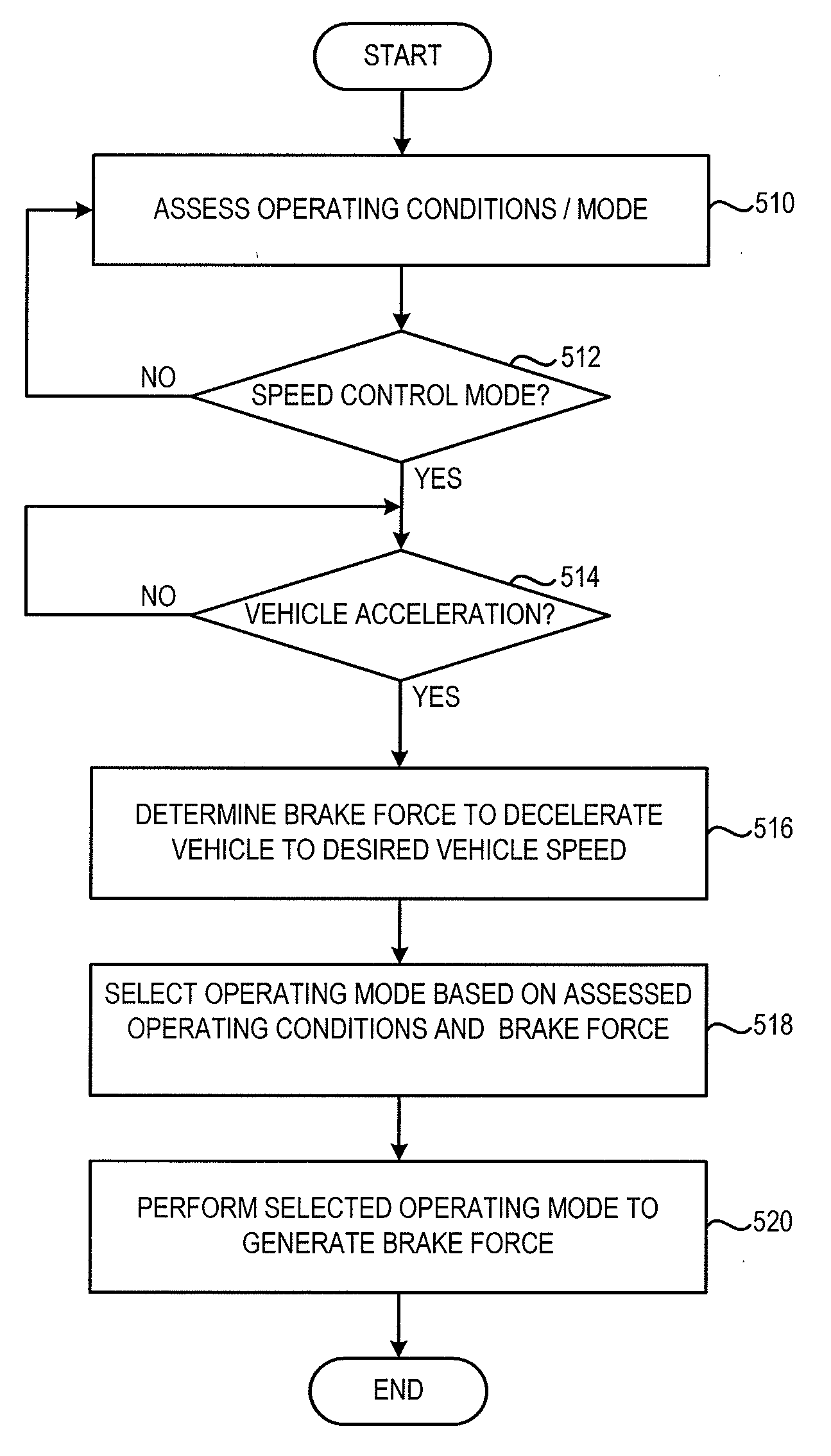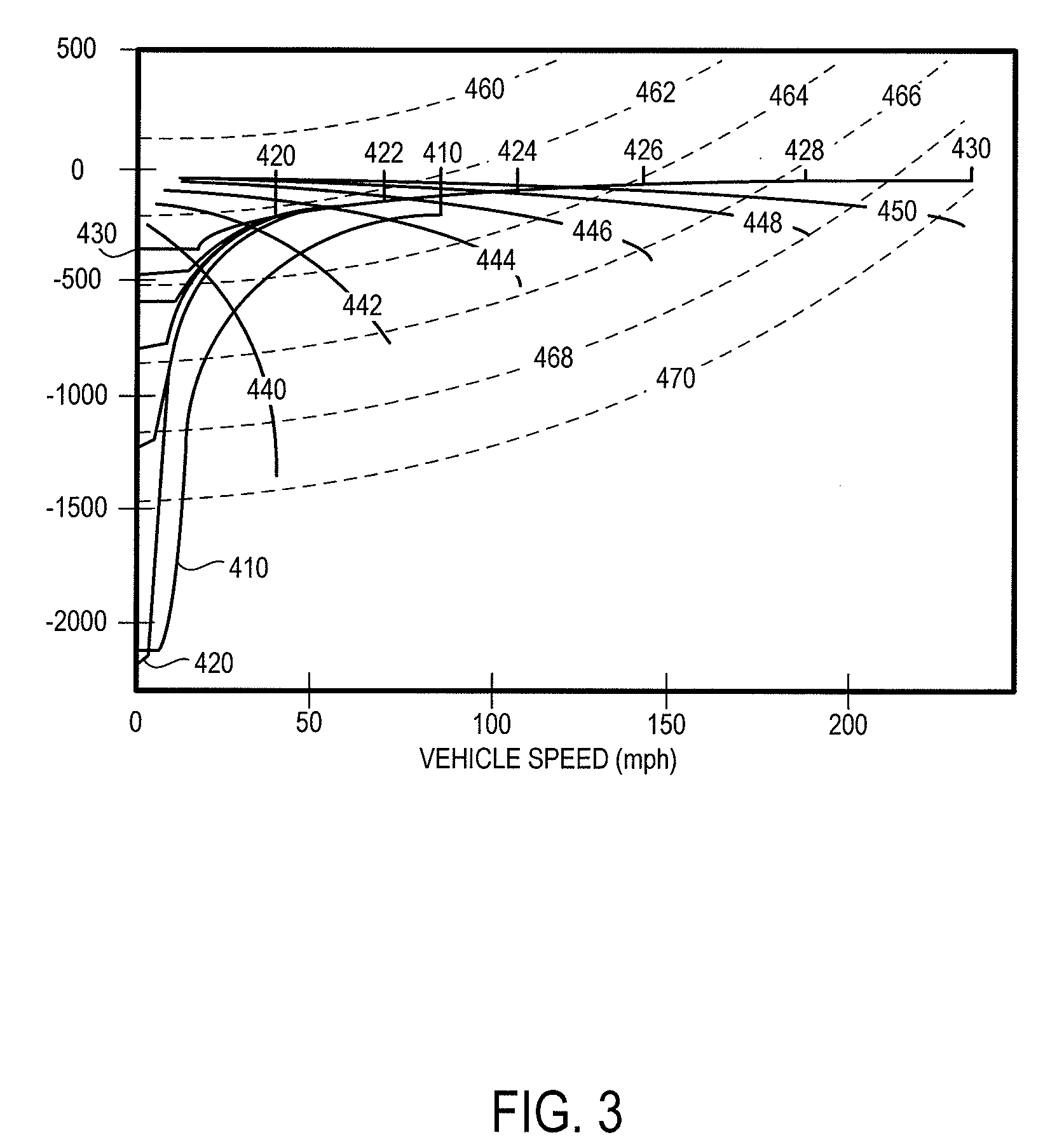Torque Control for Hybrid Electric Vehicle Speed Control Operation
a technology of torque control and hybrid electric vehicles, applied in process and machine control, vehicle sub-unit features, instruments, etc., can solve the problems of shortened lifespan, increased wear, and disclosure of disadvantages, and achieve the effects of reducing driveline disturbances, maximizing energy recovery, and minimizing engine braking
- Summary
- Abstract
- Description
- Claims
- Application Information
AI Technical Summary
Benefits of technology
Problems solved by technology
Method used
Image
Examples
Embodiment Construction
[0013]FIG. 1 illustrates an example hybrid propulsion system 100 for a vehicle. In this particular example, hybrid propulsion system 100 is configured as a hybrid electric vehicle (HEV), which may be operated in conjunction with a front wheel drive (FWD) vehicle platform. However, the approaches described herein may be applied to other vehicle platforms including rear wheel drive, four wheel drive, or all wheel drive systems. Hybrid propulsion system 100 includes a powertrain comprising an internal combustion engine (ICE) 110, a first electric energy conversion device 114, a transmission 116 for providing torque to front wheels 120, and a second electric energy conversion device 124 for providing torque to rear wheels 130.
[0014]The first and second electric energy conversion devices may be alternatively referred to as motors and / or generators. It will be appreciated that an electric energy conversion device may be any suitable device for converting electric energy to kinetic energy ...
PUM
 Login to View More
Login to View More Abstract
Description
Claims
Application Information
 Login to View More
Login to View More - R&D
- Intellectual Property
- Life Sciences
- Materials
- Tech Scout
- Unparalleled Data Quality
- Higher Quality Content
- 60% Fewer Hallucinations
Browse by: Latest US Patents, China's latest patents, Technical Efficacy Thesaurus, Application Domain, Technology Topic, Popular Technical Reports.
© 2025 PatSnap. All rights reserved.Legal|Privacy policy|Modern Slavery Act Transparency Statement|Sitemap|About US| Contact US: help@patsnap.com



